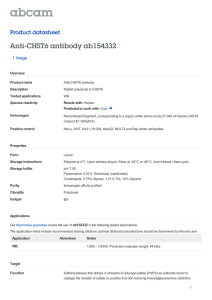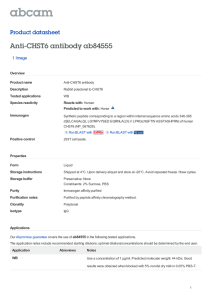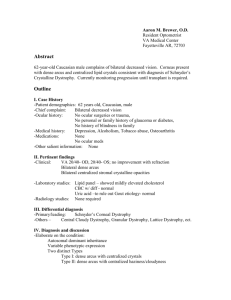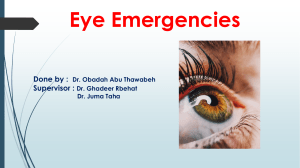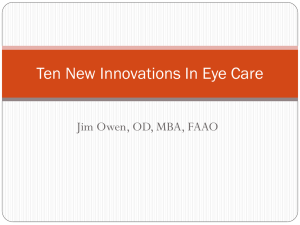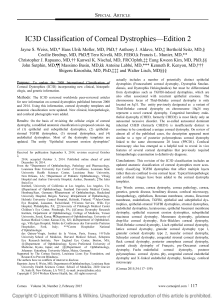Sample Multiple Choice Questions (MCQs)
advertisement
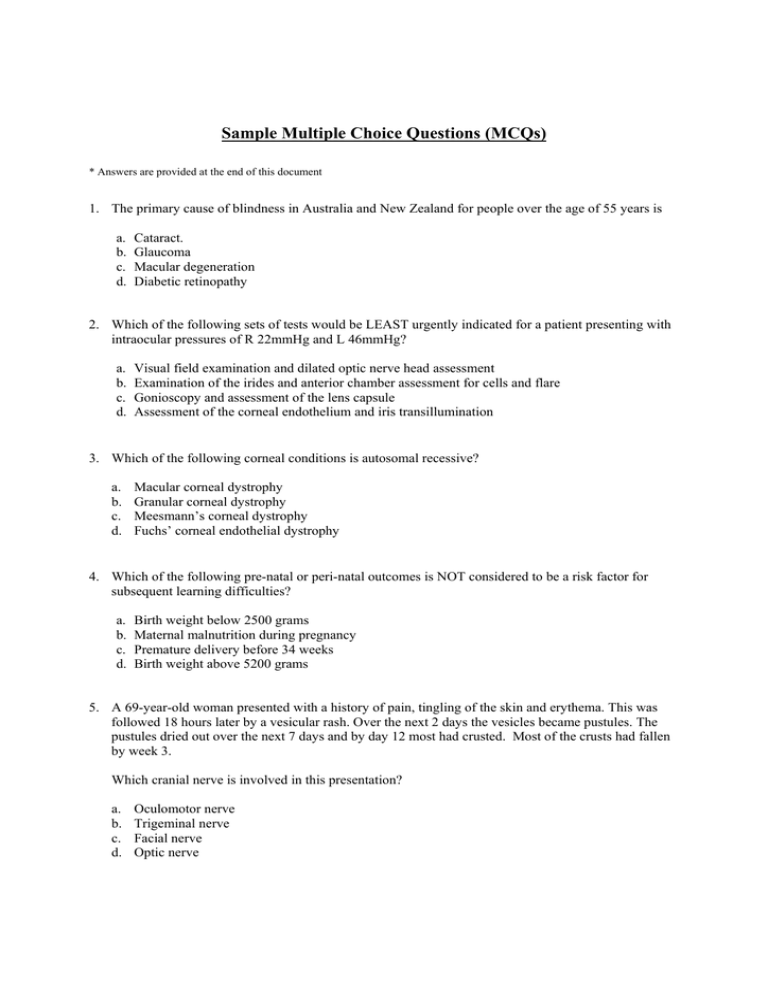
Sample Multiple Choice Questions (MCQs) * Answers are provided at the end of this document 1. The primary cause of blindness in Australia and New Zealand for people over the age of 55 years is a. b. c. d. Cataract. Glaucoma Macular degeneration Diabetic retinopathy 2. Which of the following sets of tests would be LEAST urgently indicated for a patient presenting with intraocular pressures of R 22mmHg and L 46mmHg? a. b. c. d. Visual field examination and dilated optic nerve head assessment Examination of the irides and anterior chamber assessment for cells and flare Gonioscopy and assessment of the lens capsule Assessment of the corneal endothelium and iris transillumination 3. Which of the following corneal conditions is autosomal recessive? a. b. c. d. Macular corneal dystrophy Granular corneal dystrophy Meesmann’s corneal dystrophy Fuchs’ corneal endothelial dystrophy 4. Which of the following pre-natal or peri-natal outcomes is NOT considered to be a risk factor for subsequent learning difficulties? a. b. c. d. Birth weight below 2500 grams Maternal malnutrition during pregnancy Premature delivery before 34 weeks Birth weight above 5200 grams 5. A 69-year-old woman presented with a history of pain, tingling of the skin and erythema. This was followed 18 hours later by a vesicular rash. Over the next 2 days the vesicles became pustules. The pustules dried out over the next 7 days and by day 12 most had crusted. Most of the crusts had fallen by week 3. Which cranial nerve is involved in this presentation? a. b. c. d. Oculomotor nerve Trigeminal nerve Facial nerve Optic nerve 6. A 16 year old girl presents with interest in contact lens wear for the first time. Which of the following factors would be the strongest contraindication for contact lens wear? a. b. c. d. Participation in competitive gymnastics Daily mascara use and application Long term use of isotretinoin (Roaccutane) Desire for overnight contact lens use 7. A 55-year-old patient presents for an initial consultation with visual acuity of 6/48 in the right eye. He advises that the eye has ‘been weak for a while’ and cannot say whether the vision has worsened recently. If the primary cause of the reduced vision is strabismic amblyopia, which of the following findings are you LEAST likely to elicit? a. b. c. d. Acuity reduction to 6/120 through a neutral density filter Absence of gross random dot stereopsis Subtle right relative afferent pupillary defect Constant right strabismus with unilateral cover test 8. A patient’s spectacle prescription is: R +7.00/-1.00 x 90 L +7.00/-1.00 x 90 The glasses measure: R +7.12/-1.12 x 95 L +7.00/-1.00 x 90 PD 62mm PD 61mm Which of the following parameters is outside the allowable tolerance and fails the Australian and New Zealand spectacle standards? a. b. c. d. Spherical power of the right eye Cylindrical power of the right eye Cylindrical axis of the right eye Total induced prism 9. The best immediate treatment for a chemical splash to the eye is a. b. c. d. Neutralization of the chemical with an alkali Cold compresses Ocular lubricants Copious irrigation with water 10. Which of the following conditions is the most likely to occur following a corneal abrasion? a. b. c. d. Epithelial basement membrane dystrophy Corneal hydrops Keratoconus Recurrent erosion ANSWERS 1 c 2 a 3 a 4 d 5 b 6 c 7 a 8 c 9 d 10 d

